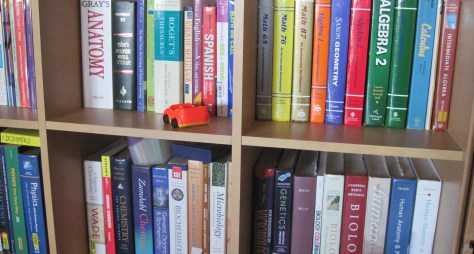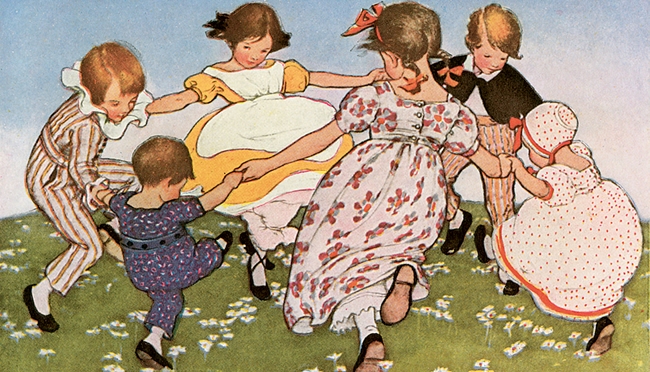I homeschool, and I do not go to church.
There. I said it. Or typed it, rather.
Not that there’s anything wrong with religion. To each their own, and I have my own beliefs.
I homeschool, not for any religious reasons, but because my two oldest kids have learning disabilities that the public schools refused to address.
When I pulled them out of school, it was sort of a spur of the moment decision. It was during Christmas vacation, or “Winter Vacation,” as they now call it, when I had a long discussion with some friends of ours that homeschooled.
I was tired of fighting with the school. I was tired of the blame being placed on me. I was tired of the meetings and pleading for accommodations, however small. I was tired of the school staff and teachers giving me “that look.”
Yeah, you know what I’m talking about.
I had one teacher tell me, regarding my dyslexic daughter, “You just need to read to her more.”
Really? Are you fucking kidding me?
So the day after Christmas vacation, I took my kids to school and signed the withdrawal forms.
Then I thought, Okay, now what?
I knew absolutely nothing about homeschooling curriculum at that point, so I got in my nerdish research mode and started researching.
What did I find on the first go around?
Religious curricula galore.
That’s fine for those that want to incorporate religion into their homeschooling studies. I think instilling faith is a good thing. It’s just not how I wanted to go about homeschooling my kids.
And that’s what homeschooling is mostly about, right? Having a choice about how your kids are educated and what is included, or not included, in that education.
After five years of homeschooling my now 18-year-old son and 15-year-old daughter, I have been able to find and provide a non-religious curriculum for them, using these resources:
1. The Critical Thinking Company
This company covers just about every subject you could ever think of, from pre-K up through adult learning. Many of their products have won national awards and recognition.
“If we teach children everything we know, their knowledge is limited to ours. If we teach children to think, their knowledge is limitless.”– Michael Baker, President
Their products are great for all types of learning styles and are not based on rote memorization and drills. In fact, some of their products look more like puzzle books than school books, making learning more interesting for your child.
I have mainly used their products as supplemental material, but their books can be used as main curricula.
They do offer package deals, if you order grade-specific sets. If you want to pick-and-choose, like I did, the search options on their site make it easy to find what you’re looking for by series, grade level, and subject.
2. Amazon
Yes, I’m serious.
Take full advantage of their Search and “Customers Who Bought This Item Also Bought” feature on product pages.
For example, go to Amazon.com and type “writing with ease 1” in the search bar at the top of the page, then click “Go.”
Click on the first search result, which should be The Complete Writer: Level 1 Workbook for Writing with Ease (The Complete Writer) by Susan Wise Bauer. I highly recommend this series, by the way. My daughter is dyslexic, and this series was amazing at helping me help her with reading comprehension.
You really only need to purchase the workbook and teach from that alone. I would read the excerpts aloud to her, and then ask her the questions, having her answer me verbally. Eventually, I encorporated short written answers.
Anyway, on the product page, scroll down to the “Customers Who Bought This Item Also Bought” feature.
Now start researching.
Click on a book that looks promising, and open a new window. Read the reviews and decide if it’s something you may want to use.
I set up some Amazon Wish Lists, so I could easily save these books and go back to them later.
Do this with different subjects and different books until you find which books you’d like to use. I found most of my curriculum this way.
Most books you can buy used, or check them out at your local library.
3. My old college and high school textbooks
Dig them out, if you still have them.
I use mine for reference or as supplemental material, like extra math problems or more illustrations for science-related topics.
4. Your local Homeschooling Convention
Yes, there are non-religious products at these conventions.
I really encourage you to go to at least one convention if you are just starting out.
If it’s anything like ours, here in Arizona, plan in advance. There are lots of speakers, so try to print out the schedule and plan your visit this way.
5. Join some local Homeschooling Groups
Unfortunately, I have yet to find a homeschooling group that is not religion based.
I have joined a few groups over the years, and so far, every one of them has been super friendly. So don’t be afraid to join anyway.
No, I don’t mention that I don’t go to church and that I don’t combine religion with our studies. Actually, the subject rarely comes up.
However, I have been introduced to some great books through these other homeschooling families. I love the Blackline Maps books and the “Whatever Happened to…” series by Richard Maybury, all of which were suggested by some fairly religious parents. So never completely blow off looking into these groups.
So there you have it! Some ideas and resources to help you get started.
Don’t fret, and don’t feel like you’re the odd ones in your typical homeschooling circles. There are other non-religious homeschoolers out there.
We’re just difficult to find. 😉








